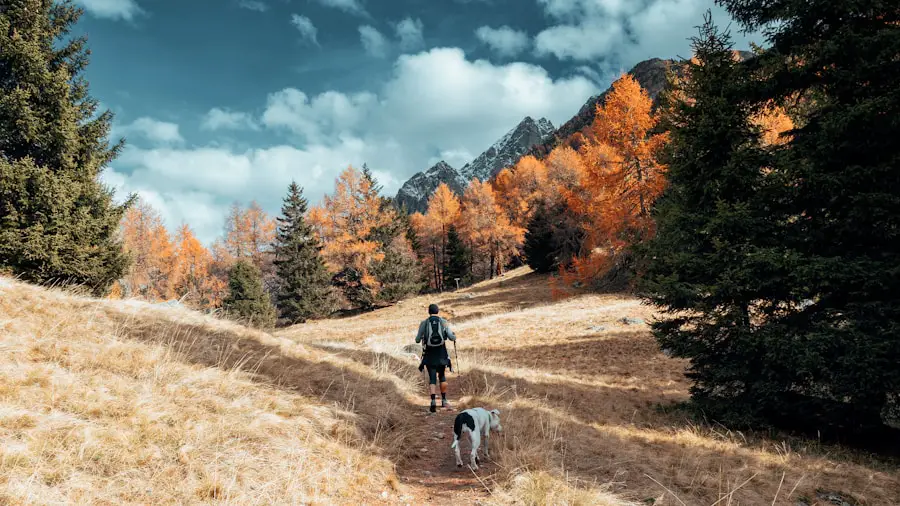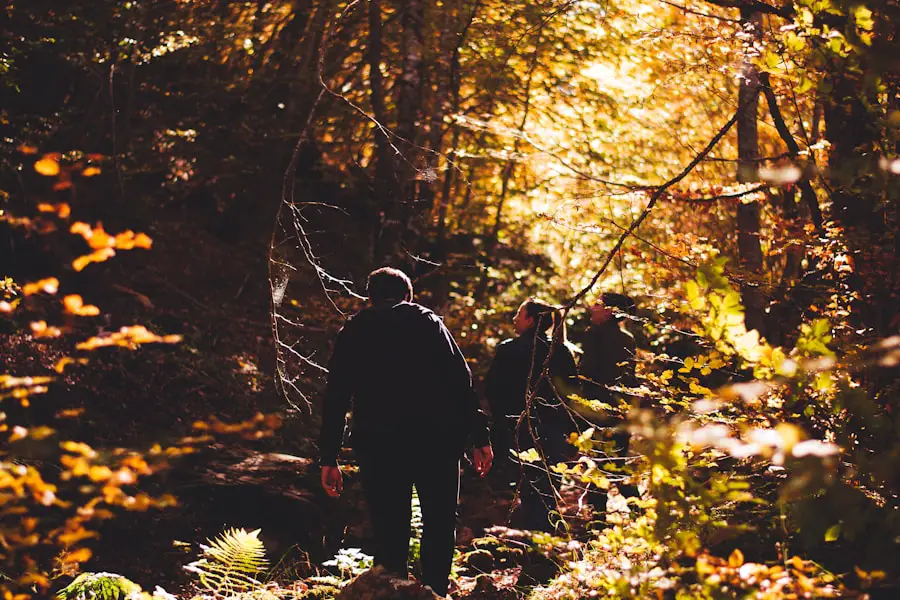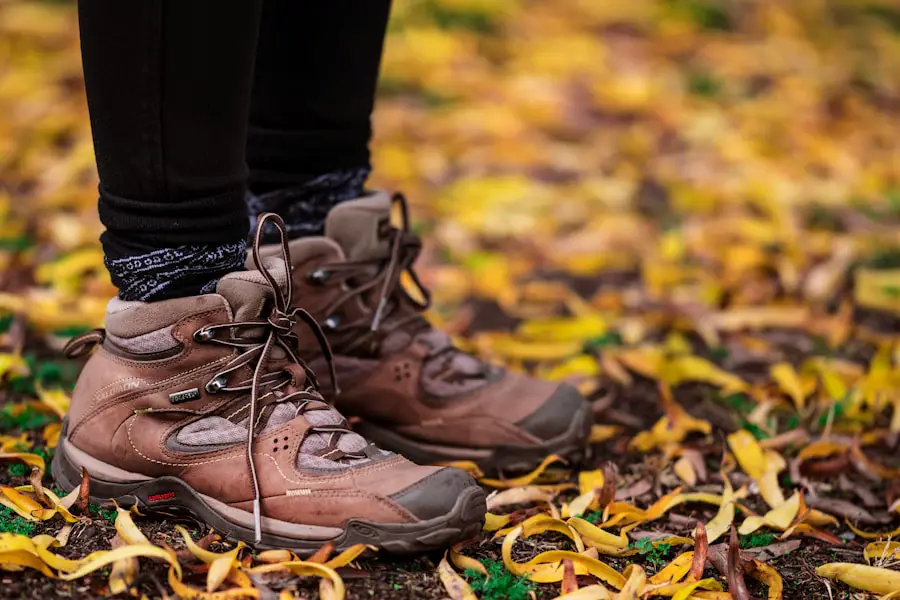Layering is a fundamental principle in outdoor clothing that allows for versatility and adaptability in changing weather conditions. The concept revolves around wearing multiple layers of clothing, each serving a specific purpose, to regulate body temperature and manage moisture effectively. The base layer, typically made from moisture-wicking materials such as merino wool or synthetic fabrics, sits closest to the skin.
Its primary function is to draw sweat away from the body, keeping the wearer dry and comfortable. This is particularly important during physical activities like hiking, where perspiration can lead to chills if not managed properly. The middle layer serves as insulation, trapping heat while still allowing moisture to escape.
Fleece jackets or down vests are popular choices for this layer, providing warmth without excessive bulk. The outer layer, often referred to as the shell, is designed to protect against wind, rain, and snow. This layer is typically made from waterproof or water-resistant materials and should be breathable to prevent overheating.
By combining these layers, hikers can easily adjust their clothing to suit the intensity of their activity and the prevailing weather conditions, ensuring comfort throughout their journey.
Key Takeaways
- Layering is essential for fall hiking to regulate body temperature and stay comfortable.
- Choose footwear with good traction and ankle support to navigate uneven terrain.
- Invest in weather-resistant outerwear to stay dry and protected from the elements.
- Accessories like hats, gloves, and scarves can add extra warmth and comfort during fall hikes.
- Select socks made from moisture-wicking materials to keep your feet dry and prevent blisters.
Footwear Options
Selecting the right footwear is crucial for a successful hiking experience, as it directly impacts comfort, stability, and safety on the trail. Hiking boots come in various styles, each tailored to different terrains and hiking conditions. For instance, lightweight hiking shoes are ideal for well-maintained trails and day hikes, offering breathability and flexibility.
These shoes often feature a rugged outsole for traction but may lack the ankle support needed for more challenging terrains. On the other hand, backpacking boots provide enhanced support and durability for longer treks or rugged landscapes. These boots typically have a stiffer sole and higher ankle coverage, which helps prevent injuries on uneven ground.
When choosing footwear, it’s essential to consider factors such as fit, weight, and the type of terrain you’ll encounter. A proper fit is paramount; boots that are too tight can cause blisters, while those that are too loose may lead to instability. Additionally, investing in quality socks designed for hiking can further enhance comfort and reduce the risk of foot-related issues.
Weather-Resistant Outerwear

When venturing into the great outdoors, especially during unpredictable seasons like fall, having weather-resistant outerwear is non-negotiable. The right jacket can make a significant difference in your overall experience by shielding you from rain, wind, and cold temperatures. Look for jackets made from breathable materials that offer waterproof or water-resistant properties.
Gore-Tex is a popular choice among outdoor enthusiasts due to its ability to repel water while allowing moisture vapor to escape. In addition to jackets, consider investing in weather-resistant pants or shells that provide similar protection for your lower body. These garments should be lightweight yet durable enough to withstand the rigors of hiking.
Features such as adjustable cuffs and ventilation zippers can enhance comfort by allowing for airflow when needed. When selecting outerwear, pay attention to the fit; it should allow for layering underneath without being overly baggy, which can lead to chafing during movement.
Accessorizing for Comfort
| Accessory | Comfort Rating (out of 10) |
|---|---|
| Scarf | 8 |
| Hat | 7 |
| Sunglasses | 9 |
| Gloves | 6 |
| Backpack | 8 |
Accessorizing appropriately can significantly enhance comfort during hikes, especially in variable weather conditions. A well-chosen hat can provide essential protection from the sun or keep you warm in cooler temperatures. Wide-brimmed hats are excellent for sunny days as they shield your face and neck from harmful UV rays.
Conversely, beanies or fleece-lined caps are ideal for colder hikes, helping to retain body heat. Gloves are another critical accessory that should not be overlooked. Depending on the season and climate, you may need lightweight gloves for mild conditions or insulated options for frigid temperatures.
Look for gloves that offer dexterity while still providing warmth; this is particularly important when handling gear or navigating trails. Additionally, consider using gaiters to protect your lower legs from mud and debris while also providing an extra layer of insulation in colder weather.
Choosing the Right Socks
Socks may seem like a minor detail in the grand scheme of hiking gear, but they play a pivotal role in ensuring comfort and preventing blisters on the trail. The right pair of socks can make all the difference between an enjoyable hike and a painful experience. Opt for socks made from moisture-wicking materials such as merino wool or synthetic blends that help keep your feet dry by drawing moisture away from the skin.
When selecting socks, consider the thickness based on the type of footwear you’ll be wearing and the climate conditions you expect to encounter. Thicker socks provide additional cushioning and warmth but may not be suitable for tighter-fitting shoes. Conversely, thinner socks can enhance breathability but may lack the padding needed for long hikes on rugged terrain.
It’s also wise to choose socks with reinforced heels and toes for added durability, especially if you plan on tackling challenging trails.
Protecting Your Head and Hands

Choosing the Right Hat
A good-quality hat is essential for maintaining comfort during outdoor activities. It can shield your face from sun exposure while keeping you warm in colder conditions. Look for hats with moisture-wicking properties that can help manage sweat during strenuous hikes. For colder weather, consider hats with ear flaps or those made from thermal materials that provide extra insulation.
Hand Protection for Cold Weather
Cold fingers can quickly become a hindrance on the trail. Insulated gloves or mittens are ideal for colder temperatures, while lightweight gloves may suffice during milder conditions. When selecting gloves, consider options with touchscreen compatibility if you plan on using your smartphone or GPS device frequently during your hike.
Additional Accessories for Extreme Cold
Hand warmers can be a valuable accessory in extremely cold conditions, providing instant warmth when needed. They can be a lifesaver on a cold winter hike.
Packing the Essentials
When preparing for a hike, packing the right essentials is crucial for both safety and enjoyment on the trail. A well-stocked backpack should include items such as water bottles or hydration systems to ensure proper hydration throughout your journey. Dehydration can lead to fatigue and decreased performance, so it’s vital to drink water regularly, especially during strenuous activities.
In addition to hydration supplies, consider packing snacks that provide quick energy boosts, such as trail mix, energy bars, or fruit. These snacks are easy to carry and can help maintain energy levels during long hikes. A first-aid kit is another essential item; it should include band-aids, antiseptic wipes, pain relievers, and any personal medications you may need.
Furthermore, navigation tools such as maps or GPS devices are critical for staying on course in unfamiliar terrain.
Safety Precautions for Fall Hiking
Fall hiking presents unique challenges due to changing weather conditions and varying trail conditions caused by fallen leaves and potential rain. One of the primary safety precautions is to stay informed about weather forecasts before heading out; sudden changes in temperature or unexpected storms can pose risks on the trail. Dressing in layers allows hikers to adapt quickly to these changes while ensuring they remain comfortable throughout their hike.
Another important safety measure is being aware of trail conditions and potential hazards such as slippery surfaces or loose rocks covered by leaves. It’s advisable to choose trails that match your skill level and experience; this helps mitigate risks associated with challenging terrain. Additionally, hiking with a buddy or group enhances safety by providing support in case of emergencies or injuries.
Carrying a fully charged mobile phone can also be beneficial for navigation and communication purposes should you need assistance during your hike. By understanding these various aspects of hiking preparation—from layering techniques to safety precautions—outdoor enthusiasts can enjoy their adventures while minimizing risks associated with changing weather conditions and challenging terrains.
If you’re planning a fall hiking trip, it’s important to dress appropriately for the changing weather. Layering is key to staying comfortable and prepared for any conditions you may encounter on the trail. For more tips on how to dress for outdoor adventures, check out this article on the best time to travel to Iceland. This guide offers valuable insights on when to visit this stunning destination and what to expect during different seasons.
FAQs
What should I wear for fall hiking?
For fall hiking, it’s important to dress in layers to stay comfortable as the temperature changes throughout the day. Start with a moisture-wicking base layer, add a insulating layer, and finish with a waterproof and windproof outer layer.
What type of fabric is best for fall hiking clothing?
Clothing made from synthetic materials like polyester or merino wool are ideal for fall hiking. These fabrics are moisture-wicking, quick-drying, and provide insulation even when wet.
Should I wear waterproof clothing for fall hiking?
Yes, it’s important to wear waterproof and windproof outer layers for fall hiking, especially if there’s a chance of rain or wind. This will help keep you dry and warm throughout your hike.
What type of footwear is best for fall hiking?
Sturdy hiking boots with good ankle support and a grippy sole are essential for fall hiking. Look for waterproof or water-resistant boots to keep your feet dry in wet conditions.
Do I need to wear a hat and gloves for fall hiking?
Yes, it’s a good idea to bring a hat and gloves for fall hiking, especially if you’ll be hiking at higher elevations where the temperature can be cooler. These accessories will help keep you warm and protect you from the elements.
Should I bring extra clothing for fall hiking?
It’s always a good idea to bring extra clothing for fall hiking, such as an extra insulating layer, a dry pair of socks, and a lightweight rain jacket. Weather conditions can change quickly, so it’s best to be prepared.
